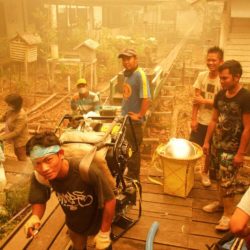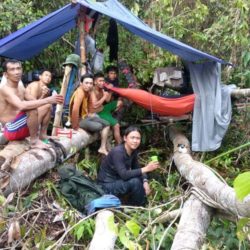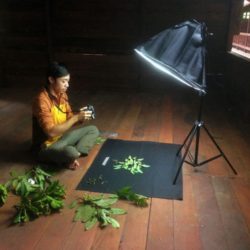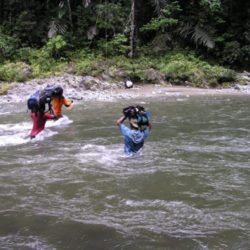This gallery challenges such a division between ‘expertise’ and ‘labour’. Rather than associating ‘expertise’ only or mainly with Western science and scientists, we highlight the many different kinds of expertise and labour that make conservation work possible. We thus highlight the crucial behind-the-scenes work that goes into scientific data collection and analysis, from navigating and transporting equipment across difficult terrain to documenting and classifying plant specimens. We also shed light on the skilled and often risky work that facilitates conservation activities, from using a variety of equipment and techniques to safely ‘rescue’ and transport orangutans to fighting the fires that regularly threaten both humans and forests.
These activities require place-based familiarity, physical know-how, on-the-ground experience and often traditional knowledge—all of which make up specific and indispensable forms of expertise. As such, they blur the lines between ‘expertise’ and ‘labour’, as well as the hierarchies of authority and decision-making that are often assumed to shape conservation. They remind us that scientists are not the only ‘experts’ that count in these conservation interactions, and invite us to consider how else expertise can be imagined and evaluated.
These images reveal how—despite their relative invisibility in international coverage of orangutan conservation—local staff and community members can actively shape conservation knowledge and strategies. In doing so, they perform the critica yet often unsung work of translating between different socio-cultural worlds, power relations and regimes of expertise and knowledge: between traditional ecological knowledge and scientific taxonomies, for example, or between local land concerns and conservation priorities. It is in these processes of translation that ‘tidy concepts [and protocols]’ meet with ‘messy lives’, with far-reaching effects for orangutan conservation on the ground. What new knowledges and models of expertise do these translations create? What might get lost or transformed in the process? And most challengingly: how might the work of such individuals destabilize traditional conservation hierarchies and practices, and facilitate models of conservation that are led by community-based concerns and expertise?






